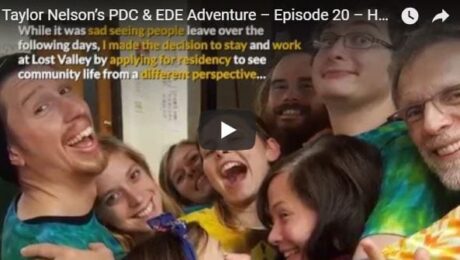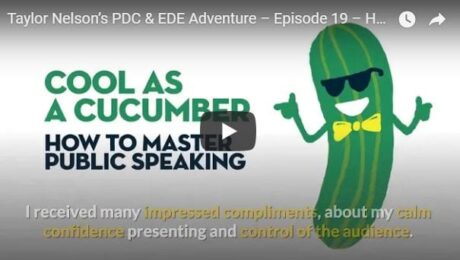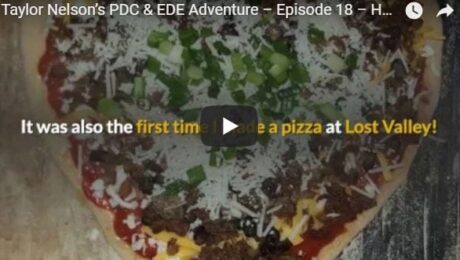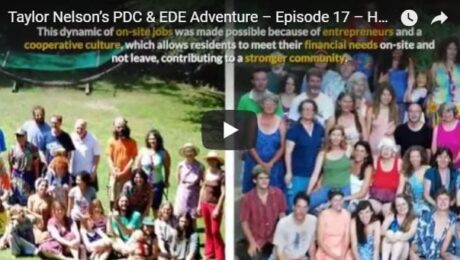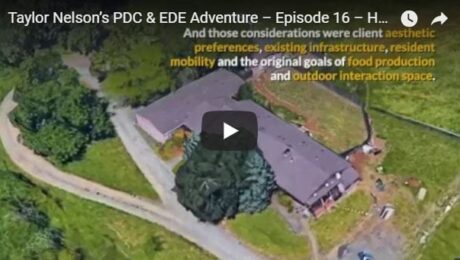Lost Valley Week 12 – PDC Presentations and Last Days
HSS Week 12
The weekend before our final week, Bri and I went over the Bethany’s to make final touches to our PDC project design and PowerPoint presentation. I was very proud of our design, and really appreciated Bethany’s proactiveness and follow-through, because those weren’t common characteristics of the people living in the community. (more…)
- Published in General, Lost Valley, PDC/EDE, Vlog
Lost Valley Week 11 – Social/Econ Projects and Art Barn Loft
HSS Week 11
As the final weeks of the program were before us, Sara Siegler (Lost Valley’s Executive Director) and Colin Doyle, approached me to see if I was interested in working as the part-time Communications Manager for Lost Valley Education and Event Center. I accepted the position knowing I could put my marketing skillset to use and help Lost Valley move forward with their marketing and outreach. I was even given my own office space that I overhauled and organized for myself, and anyone else who needed public space to work. (more…)
- Published in General, Lost Valley, PDC/EDE, Vlog
Lost Valley Week 10 – Pizza and Field Trip Day
HSS Week 10
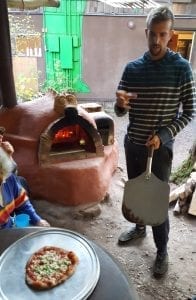 That weekend before classes started, Rich – the friendly neighborhood vagabond – returned to Lost Valley, and we got the dragon pizza oven fired up! Rich has a long history with cob fire pizza ovens, which started at his grandpa’s and was also how he wound up staying at Lost Valley and became an approved seasonal traveler.
That weekend before classes started, Rich – the friendly neighborhood vagabond – returned to Lost Valley, and we got the dragon pizza oven fired up! Rich has a long history with cob fire pizza ovens, which started at his grandpa’s and was also how he wound up staying at Lost Valley and became an approved seasonal traveler.
Pizza days at Lost Valley generally attracted a large crowd, and this weekend was no different. We had residents making fresh dough, cutting up ingredients and toppings, and others just hanging out around the cob booth area while Rich tended the pizza oven. (more…)
- Published in General, Lost Valley, PDC/EDE, Vlog
Lost Valley Week 9 – Water Day and Feelings Friday
HSS Week 9
Our guest instructor for Monday’s classes was Laird Schaub, who has spent over 40 years living in various communities – primarily at Sandhill Farm with his former partner, and then Dancing Rabbit Ecovillage. Laird is a shrewd man, and has been a community networker and group process (facilitation) consultant for over 25 years, so he had a wealth of contextual knowledge. (more…)
- Published in General, Lost Valley, PDC/EDE, Vlog
Lost Valley Week 8 – Appropriate Technology and Leadership
HSS Week 8 – Rest of the Week
It took time and reflection, but I got into a better head space for the rest of the week since miserable Monday.

Wednesday started with presentations of our initial design concepts for our PDC projects. Bri and I went to Bethany’s the day before to make the initial design and overlay concept layers, which was a hand-drawn scaled sketch on white butcher paper and colored pencils, and Bethany taped transparency sheets to make large overlay mats which we drew the design layers on. These layers includes wind direction, summer and winter sun patterns, water flow, levels of elevation, human and animal foot traffic, as well as other considerations. And for our design, those considerations were client aesthetic preferences, existing infrastructure, resident mobility and the original goals of food production and outdoor interaction space.
Our permaculture instructor after the presentations was Simon Hanson, a former resident who helped with the past apprenticeship program. The topics for the day were appropriate technology and human nutrient cycling. Simon boiled down the use of appropriate technology to ‘levels’ and ‘context,’ for instance, if one entire neighborhood block bought a single lawnmower and shared it on a schedule, then it reduces consumption so everyone wouldn’t need to buy, refill and fix their own individual mowers.
(more…)- Published in General, Lost Valley, PDC/EDE, Vlog
Lost Valley Week 7 – One Planet Life and Forgiveness
HSS Week 7
Coming off the mid-program break, this week was also jammed pack, but on the back-end of the week.
Classes started off with Brian teaching us about animals, aquaculture and pest management in permaculture. We specifically went over to the duck and chicken pen and discussed their inputs vs outputs, pros vs cons, and why they are the only livestock onsite. (Lost Valley previously had sheep, but they constantly escaped. Also honey bees, until a bear came through and demolished the hives.) (more…)
- Published in General, Lost Valley, PDC/EDE, Vlog

